How Much Does Wood Stove Installation Cost?
- October 16, 2023
- 0 comment
Considering a wood stove for your home? While wood stoves bring a charming warmth to any space, installing one involves more than just choosing the right model. This guide breaks down the costs you can expect when installing a wood stove, covering everything from the initial purchase to installation fees and additional essentials. Whether you’re looking to add a rustic touch to your living room or seeking an efficient heating solution, understanding these costs is crucial for making an informed decision.
What is a Wood-Burning Stove?
A wood-burning stove is a metallic heating device that utilizes firewood for fuel. Though it functions independently, it can work alongside other heating systems. It consists of a fireproof firebox and a vertical vent similar to a chimney, which disposes of particulates and unburnt gases.
Installation Procedure for a Wood-Burning Stove
Setting up a wood-burning stove involves expertise from multiple domains, including roofing, drywalling, flooring, and HVAC venting. Consequently, it’s recommended to employ a contractor experienced in wood stove installations.

Preparations begin with fortifying the floor to bear the stove’s weight, potentially involving joist strengthening, subfloor reconstruction, or laying a concrete-like foundation. Considering the high temperatures wood stoves reach, a fire-resistant hearth beneath and a heat shield behind the stove (if placed near a wall) are crucial. Air supply can be facilitated through an exterior wall cut-out, linked to the stove via a metal vent. Furthermore, a vertical metal chimney pipe extending above the house’s roofline is essential for venting the stove’s exhaust.
Cost Considerations
Installing a wood stove can transform a room’s ambiance. While providing additional warmth, it bestows a comforting aura. Installation costs range from $325 to $4,000, influenced by stove dimensions, type, location, capacity, installation duration, and job intricacy. These stoves often offer superior warmth compared to traditional fireplaces and are versatile in placement.
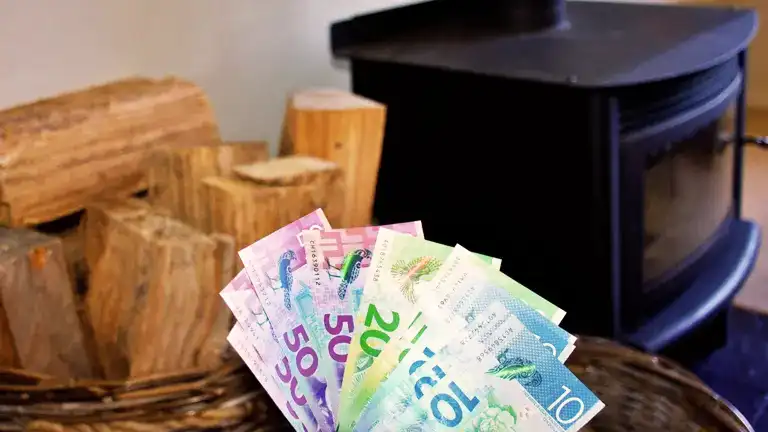
Ensuring fire safety is paramount, necessitating floor and wall protection and apt ventilation. Including heat-resistant materials and inspection charges to comply with local codes and manufacturer guidelines can escalate costs. Labor charges oscillate between $250 and $800, encompassing chimney setup, stove fitting, ventilation, wall protections, and hearth pads. Labor costs also fluctuate based on stove type, masonry work required, job complexity, and any essential repairs.
Wood Stove Key Factors Influencing Installation Costs
The decision to integrate a wood stove into your home isn’t just about aesthetics; the installation costs play a significant role too. Although typically more affordable than fireplace installations, wood stove costs vary based on multiple elements. These range from the stove’s type, material, and brand to heating efficiency, location, and even regional labor rates.
1. Choosing the Right Stove Type
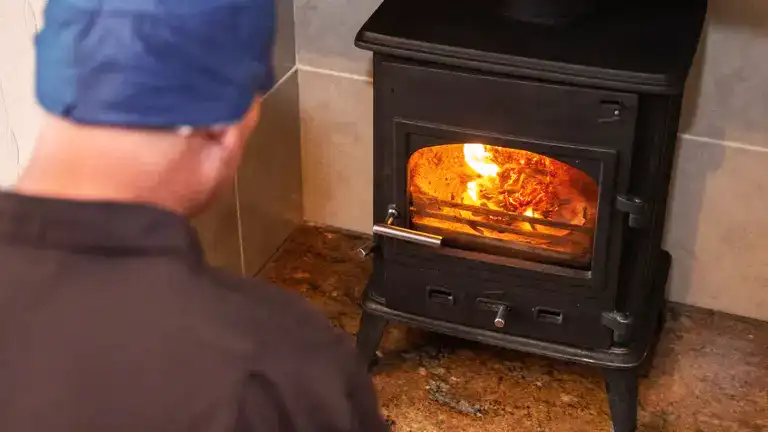
When it comes to types, homeowners can opt for catalytic, noncatalytic, or hybrid stoves. Catalytic variants are optimal for those prioritizing long burns and using the stove as the primary heat source. In contrast, noncatalytic models suit occasional users or those seeking supplementary heating. Hybrid models blend the best of both, offering efficient burning due to their secondary combustion chamber.
2. Material Matters

The material of the stove significantly dictates its price. Standard materials include cast iron and stainless steel. Both radiate heat effectively, though cast iron retains it longer. While the performance difference between the two is negligible, design preferences and cost considerations might tip the scale. Cast iron models, available in varied colors with enamel finishes, usually cost 20-30% more than their steel counterparts. Some unique offerings also include cast-iron stoves with soapstone panels, which radiate heat gradually, long after the fire’s out.
3. Brands and Their Pricing
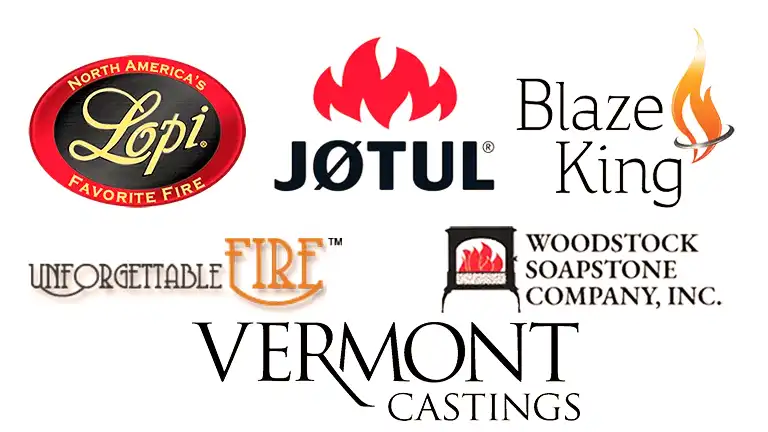
Prices vary across brands, even if installation costs remain consistent. Here’s a brief overview of popular brands:
- Lopi: Offering both steel and cast-iron options, Lopi stoves are equipped with a unique GreenStart igniter, facilitating easy fire starts. Their range is priced between $900 and $1,500.
- Jøtul: Hailing from Norway since 1853, Jøtul offers a vast range of efficient, clean-burning stoves in diverse designs. Prices range from $1,000 to $3,700.
- Unforgettable Fire: Perfect for smaller spaces like cabins and tiny houses, their stoves are priced between $4,800 and $5,200.
- Vermont Castings: Offering elegantly finished cast-iron stoves, homeowners can select from catalytic, noncatalytic, and FlexBurn models, priced between $1,200 and $3,600.
- Blaze King: Known for their extended burn times and efficient burn systems, their stoves are priced between $2,200 and $4,000.
- Woodstock Soapstone: Emphasizing quality over quantity, their stoves blend cast iron and soapstone, with prices ranging from $2,400 to $4,300.
4. Heating Potential of Wood Stoves
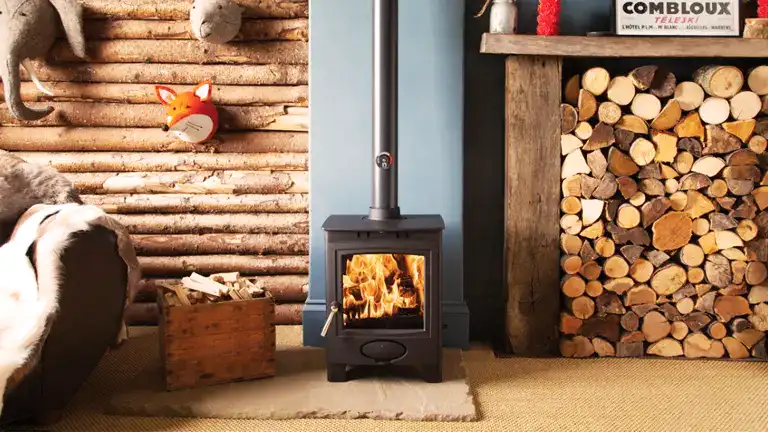
The capability of a wood stove to warm a space is determined by its heating capacity. Small noncatalytic stainless steel stoves are the most economical choices, ideal for warming limited spaces. On the other hand, catalytic cast-iron stoves, designed to heat extensive areas, generally come with a heftier price tag. Prices for wood-burning stoves typically correlate with their heating potential.
5. Setting up Chimneys and Liners
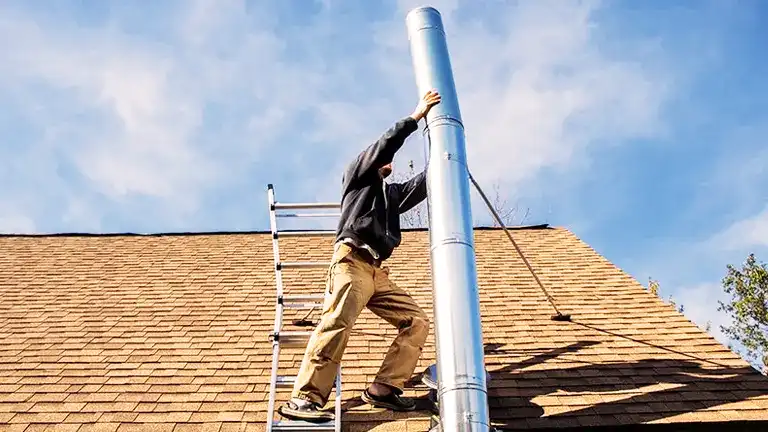
Safety standards and building codes dictate specific requirements for chimneys. They should rise at least 3 feet above a roof’s surface, stand 2 feet higher than any structure within a 10-foot radius, and exceed the highest point of the roof by 3 feet. Chimneys that are more than 5 feet above the roof necessitate an additional roof bracket for stability. To deter birds from entering, a protective chimney cap or a Class A termination cap should be positioned at the specified height. While external chimneys tend to accumulate creosote, internal chimneys are often favored for this reason. Furthermore, chimney pipes are advised to have a maximum of two bends to ensure proper airflow. Constructing a 15-foot chimney can set you back anywhere from $900 to $3,000, whereas renovating one can cost between $1,000 and $5,000.
Liners in chimneys play a pivotal role in minimizing the accumulation of soot and creosote, which pose fire risks. The installation of such liners typically costs between $625 and $7,000, though the average homeowner might spend around $2,500. Among the choices, aluminum and clay liners are the most wallet-friendly, unlike thermocrete or ceramic.
6. Connecting with Stove Pipes
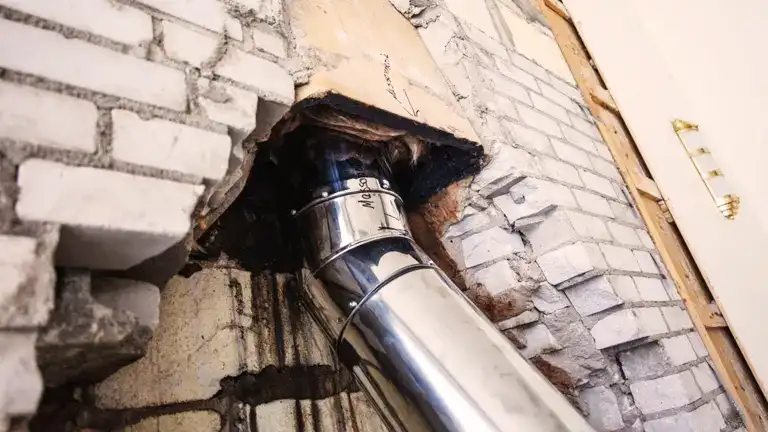
Often referred to as an internal flue or a black pipe, the stove pipe serves as a conduit between the wood stove and the chimney. These pipes can be single- or double-walled and maybe 22- or 24-gauge in thickness. For stoves placed in rooms with towering ceilings requiring more than 8 feet of piping, it’s advisable to opt for double-walled pipes. These enhanced pipes insulate better, ensuring gases remain sufficiently heated to escape the home using ambient drafts.
The financial aspect of setting up wood stove pipes hinges on their design and length, with costs oscillating between $100 and $550.
7. Influence of Installation Spot on Costs

The expenses associated with wood stove installations can fluctuate based on the design and the chosen spot for installation. Chimneys aligned with external walls can cost anywhere from $2,300 to $3,200. Those piercing through heightened ceilings might range from $1,800 to $2,100, while those extending through upper floors could vary between $2,400 and $3,300.
8. Manpower Costs
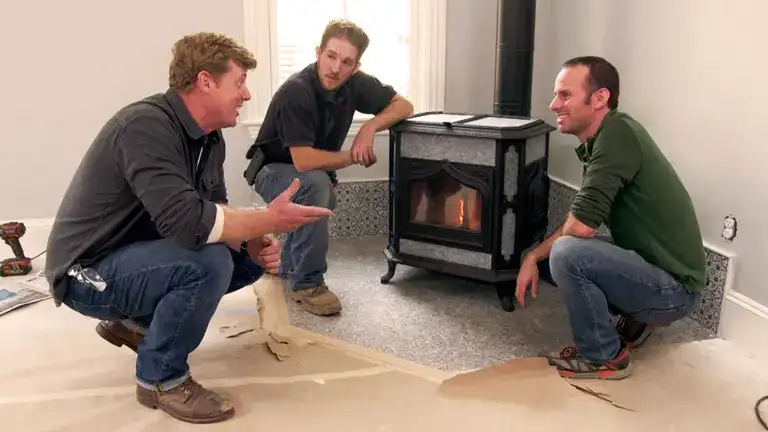
The complexity of the task dictates the labor costs for wood stove installations, which generally range from $250 to $800. While some specialists bundle services like chimney setup, stove placement, piping, hearth padding, and ventilation into the labor fees, others might itemize these costs. It’s prudent for homeowners to inquire about what’s covered in the quoted labor fees. Furthermore, location impacts these costs; urban settings typically command higher fees compared to less populated regions.
9. Licensing and Approval
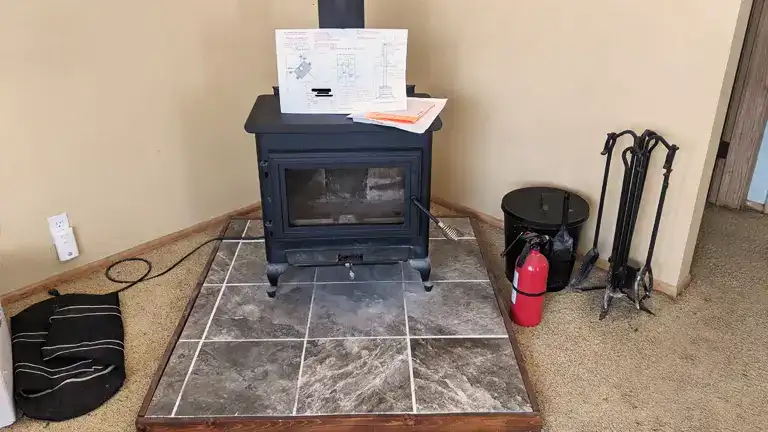
Securing the necessary permits for a wood stove installation usually incurs costs ranging from $50 to $250. While most professionals handling the installation will manage the permit process, homeowners should confirm this to sidestep any potential complications.
Understanding Additional Expenses and Factors
When looking into the costs associated with installing a wood stove, homeowners should be aware of all possible additional expenses and factors. The total cost can vary based on several elements, including choosing between a standalone stove or a fireplace insert, opting for wood-burning or pellet-burning stoves, the expense of converting a gas fireplace, custom additions, available tax breaks, and rebates.
Choosing the Right Wood Stove
Homeowners have to decide between catalytic, noncatalytic, or hybrid stoves. Each offers distinct advantages, costs, and features.
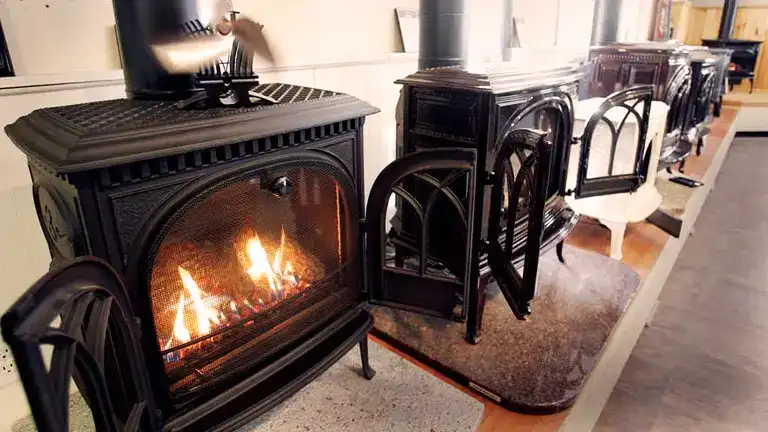
- Catalytic: These stoves increase efficiency by trapping and recycling particles in a chamber where they combust at a lower temperature. They are more eco-friendly, efficient, and can cost between $1,700 to $4,400.
- Noncatalytic: These stoves are generally cheaper, costing between $400 and $2,900. They are simpler to start but may struggle to achieve the temperature needed for secondary chamber ignition. They also require more fuel and emit more particles into the atmosphere.
Standalone Stove or Fireplace Insert?
Usually, installing a standalone wood stove is more expensive than renovating a fireplace for an insert. This is because a standalone stove requires extra components, like a stove pipe and safety materials around it. Standalone stoves tend to distribute heat more efficiently due to their larger exposed surface.
On the other hand, a fireplace insert, made of insulated glass and metal, is an efficient heater compared to traditional fireplaces. It reduces heat loss up the chimney and costs between $700 and $6,500, with labor costs varying based on fuel type. Alternatively, a wood-burning fireplace can be made more efficient using a wood stove kit. Below are the average prices for various fireplace inserts.
Wood-burning vs. Pellet Stoves
While wood stoves have a price range of $325 to $4,000, pellet stoves typically cost between $1,000 and $3,100. Pellet stoves often offer a more budget-friendly installation as they can be directly vented without needing an expensive chimney. They burn eco-friendly pellet fuel, which might add about $20 to monthly expenses compared to wood.
Converting a Gas Fireplace
If a gas fireplace already has a chimney flue, converting it to wood-burning will cost around $100 to $300. The price might escalate due to masonry tasks, chimney construction or replacement, and any required repairs. Making the switch can enhance heating efficiency by 60% to 80%. Below are some potential costs linked with converting a gas fireplace, including labor:
- Constructing a 15-foot chimney: $900 to $3,000
- Installing a flue or chimney liner: $625 to $7,000
- Repairing a fireplace: $177 to $933
- Masonry work labor: $40 to $75 per hour
Custom Additions
For those looking to install a top-tier wood stove, there are customizable features available. A hearth pad, a mandatory installation, acts as a shield between the stove and the floor.
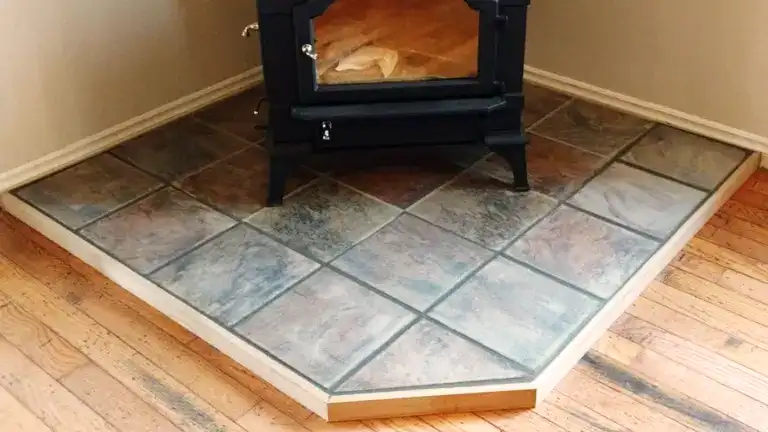
While it’s commonly made from concrete, there are choices like slate, granite, marble, brick, or limestone for the top. The average cost varies between $200 to $500 based on material choice.
Tax Benefits and Rebates
The federal government provides a $300 Residential Energy Credit for homeowners who opt for a biomass (pellet) stove with at least 75% efficiency. Some states also provide up to $5,000 as a rebate for replacing old wood stoves with EPA-certified models.
Strategies to Reduce Wood Stove Installation Expenses
Setting up a wood stove is undeniably an investment. While it offers the dual benefits of cost savings on heating and creating a warm ambiance, the initial installation might strain your wallet. Upgrading from an older, less efficient system might come with its costs, despite potential savings from reduced maintenance.
- Research Thoroughly: When contemplating a wood stove purchase, conduct comprehensive research. Assess various models, juxtapose their prices, and stay updated on potential deals or promotions.
- Opt for DIY: If you possess the requisite skills, contemplate self-installation to economize. But bear in mind, that proper setup is imperative for both safety and optimal functioning.
- Choose Off-Peak Times: Engaging contractors during their less hectic periods might fetch you a bargain, given their inclination for off-peak discounts.
- Leverage Local Offers: Check for incentives or rebates from local administrations or utility providers. Such initiatives, aimed at endorsing energy-efficient heating solutions, can significantly slash your installation costs.
The average costs presented in this article were determined by consulting several providers and cost databases, both nationally and locally. All figures provided were accurate at the time of writing but may vary over time.
Expand Your Understanding of Wood Stoves: Dive into our related articles listed below. Whether you’re a novice or a seasoned stove enthusiast, there’s always something new to learn and discover!
- Wood Stove Installation Cost for Tiny Houses: A Complete Breakdown
- How to Install a Wood Stove in the Basement 2023
- How to Keep Wood Stove Glass from Getting Black 2023
- How to Remove Rust and Restore a Wood Stove 2023
- How to Replace the Gasket on a Wood Stove 2023
- Can You Burn Coal in a Wood Stove?
FAQs
- Why does the cost of wood stove installation vary so widely between providers?
Installation costs can differ based on regional labor rates, complexity of the installation, type of stove, and any additional customizations or requirements. - Can I reduce costs by installing a wood stove myself?
While DIY installation may seem cost-effective, it requires expertise to ensure safety and efficiency. Incorrect installations can lead to increased risks and potential future repair costs. - How does the material of the wood stove influence the overall cost?
Materials like cast iron or stainless steel can impact both the stove’s price and its performance, with some materials retaining heat longer or offering different aesthetics. - Are there hidden costs I should be aware of when getting a quote for wood stove installation?
Always ask for a detailed breakdown. Some quotes might not include peripheral expenses like chimney modifications, hearth installations, or necessary inspections and permits. - Does the size of my room or home influence the installation cost?
The size can dictate the type and capacity of the stove required, which in turn can influence the cost. Larger areas might need stoves with greater heating capacities, which could be pricier. - Why might a chimney rebuild or modification be necessary, and how does this affect the cost?
Existing chimneys might not meet the specific requirements for wood stoves, necessitating modifications or rebuilds, which can add to the installation costs. - How do local permits or regulations impact the cost?
Some regions require specific permits or adherence to particular standards, which can influence installation methods and costs. - Can seasonal factors impact the cost of wood stove installation?
Yes, installing during off-peak seasons might fetch you a discount as contractors might be less busy. - Do energy-efficient wood stoves come with a higher installation cost?
While energy-efficient models might have a higher initial cost, they can offer savings in the long run through reduced fuel consumption and possible tax credits. - If I’m replacing an old wood stove with a new one, will the installation be cheaper?
Not necessarily. While some infrastructural elements like chimneys might be reused, the new stove might have different specifications requiring modifications, affecting the cost. - Are there any long-term savings associated with the initial cost of wood stove installation?
A properly installed wood stove can reduce heating bills, require less maintenance, and increase the home’s resale value, offering long-term financial benefits. - Can the aesthetic or design choices of my wood stove installation affect the price?
Yes, custom designs, special finishes, or unique installations can influence the overall cost due to materials or additional labor involved.
Hey there! If you’ve journeyed with us through this article on How Much Does Wood Stove Installation Cost? you’ve probably realized that there’s a lot to consider. But let’s not forget the heartwarming charm and snug vibes a wood stove brings to a home. Think of it as an investment not just in warmth, but also in countless cozy evenings, hot cocoa in hand, and the soft crackling of wood in the background. Sure, costs and logistics matter, but the joy and comfort a wood stove brings are simply priceless. We’d love to hear about your wood stove dreams, adventures, or even funny mishaps. So, don’t be shy! Drop a comment, share a story, and let’s celebrate the magic of wood stoves together. Stay warm and keep smiling!

David Murray
Forestry AuthorI'm David Murry, a forestry equipment specialist with a focus on chainsaw operation. With over 13 years of experience, I've honed my skills in operating and maintaining a wide range of machinery, from chainsaws to log splitters. My passion for the outdoors and commitment to sustainable forestry drive my work, which emphasizes safety, efficiency, and staying updated with industry advancements. Additionally, I'm dedicated to sharing my expertise and promoting environmental awareness within the forestry community.













Leave your comment